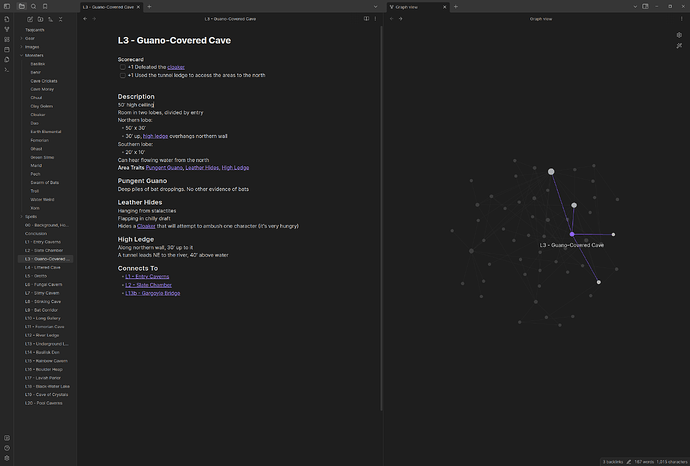I’m still pretty new to the whole “DMing” thing after about a year or so of running a few different adventures, and the thing that I keep feeling like I’m stumbling over is game prep.
Based on the results I get back from searches, it seems like this is an issue with a lot of incredibly varied opinions - from “just don’t” up through “memorize the adventure” - that make it seem like this strange art of slogging along until you’re able to crystallize a personal style, and that’s just a magnificently unhelpful, unsatisfying conclusion; so I reject it.
There has to be some kind of basic framework we can lean on, right? Some common set of practices we can employ to help attain that Personal Style Enlightenment?
I’m nowhere near bold enough yet to leave the coastal waters of published adventures, so that’s what I’m talking about.
Here’s the 50’ view of my process, with effusive thanks to the incomparable DarkplaneDM (seriously, check out his blog, so many goodies):
- Read the adventure - the whole thing - and identify the Big Reason for it (sometimes the author just gives this to you, for free, like they meant you to know it!)
- Sketch out a diagram of the zones in the adventure, how they connect to one another, and identify the Gatekeepers between the zones
- At this step, those zones are the “major areas” in a rough-blocking exercise: “the hub village,” “outside the ancient ruin,” or “the monastic cloister.” These places might be made up of individual buildings or several rooms, but those aren’t the point yet
- Zones are connected if the players could normally move between them, the connection is how they move from one zone to another: a path, a portal, flying eagles, etc.
- Gatekeepers can include physical stuff like traps, monsters, or locks, but they can also be things like information, effects, or alliances/enmities/rivalries
- Now you “zoom into” each of those zones and situate its Gatekeepers in that space, along with (and I just adore this notion, h/t to Graham) that space’s Traits that will expose, satisfy, or resolve each Gatekeeper
That’s… it. Really. And yeah, I know, that last point seems pretty abstract, but those Gatekeepers amount to all the challenges, conflicts, and moments of drama that stand between the party and the Big Reason they were doing all of this.
I like this technique mainly because it helps me focus on what the author thought mattered, saves me loads of time, and it establishes a basis for editing and personalizing the adventure. All these core bits define the theme of the adventure; the faster I get to that, the more time I have to devise variations to explore that theme.
What do you think? What’s your process like?
